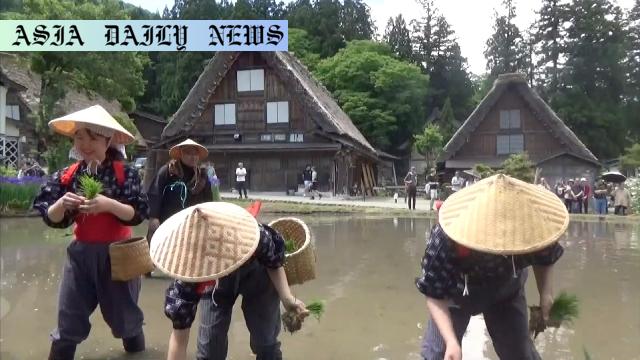Rice-planting: The 40th annual Shirakawa-go rice-planting festival saw women in traditional clothing bringing life to rice paddies.
The 40th rice-planting festival was held in Shirakawa-go, Japan.
Participants included locals and first-timers who enjoyed the experience.
The event highlighted tradition, cultural connection, and joy.

A Celebration of Tradition at Shirakawa-go
Shirakawa-go, a UNESCO World Heritage Site in central Japan, once again demonstrated its steadfast commitment to preserving and celebrating traditional practices through its 40th annual rice-planting festival. Set against the stunning backdrop of the village’s iconic steep thatched-roof homes, this yearly event allows locals and visitors alike to connect with a cornerstone of Japanese culture: cultivating rice. On Thursday, approximately 20 women donned traditional clothing, courageously stepping into the serene yet challenging rice paddies. Their synchronized actions marked a celebration not merely of planting rice but of unity, cultural preservation, and the enduring rhythm of agrarian life.
First-Time Perspective: An Introspective Experience
The festival proved to be an engaging and eye-opening experience for first-time participants. Among them, an American visitor expressed both joy and gratitude at the opportunity to learn about Japan’s profound cultural traditions, highlighting how such shared experiences foster global cultural understanding. Similarly, a woman planting rice for the first time mentioned her newfound appreciation for the effort and skills required for this task. She revealed her aspirations to move to this enchanting village and participate in future festivals, reinforcing how Shirakawa-go continues to inspire a sense of belonging for those drawn to its serene beauty and communal spirit.
Looking to the Future: Preserving a Cherished Legacy
The festival’s resonance among participants underscores the importance of sustaining such events to preserve Shirakawa-go’s rich heritage. The head of the organizing committee acknowledged the enthusiasm of new participants and expressed a hope that the festival will continue to thrive in the years to come. As these annual gatherings blend the old with the new, they serve as a testament to Japan’s reverence for its traditions while opening doors to involve people from around the world. This balance guarantees that the festival is not merely a reenactment of cultural practice but also an evolving celebration of community and connection.
Commentary
Understanding Shirakawa-go’s Cultural Richness
The annual rice-planting festival at Shirakawa-go provides an extraordinary lens into the fabric of Japanese culture. As a first-time observer or participant, one cannot help but feel a profound connection between the people of this region and their centuries-old customs. It is inspiring to see locals dressed in traditional clothing and cherishing the very landscapes their ancestors nurtured. Such cultural manifestations remain an integral piece of Japan’s identity and heritage.
Insights from the Event
What sets this festival apart is its inclusive nature. By opening the event to visitors and newcomers, Shirakawa-go beautifully intertwines local tradition with a global audience. The reactions from first-time participants highlight the importance of experiential cultural exchanges in a time when many historical practices are fading. This rice-planting event is an example of how simple acts like tending to a field can unite people, blending the tasks of farming with a joyous communal atmosphere.
Reflections on the Festival’s Future
As Shirakawa-go continues hosting its rice-planting festival, it brings hope for a future where cultural traditions don’t fade into the backdrop of modernity. The head organizer’s aspiration for the event’s longevity is commendable, and one can only wish that it prospers, drawing more participation and admiration every year. Such festivals serve as a reminder of humanity’s shared roots in agrarian activities and the deep sense of identity they engender. This preservation of ritual amidst stunning landscapes will undoubtedly leave an imprint on the global cultural narrative, creating a bridge between Japan’s past and a future full of shared traditions.



